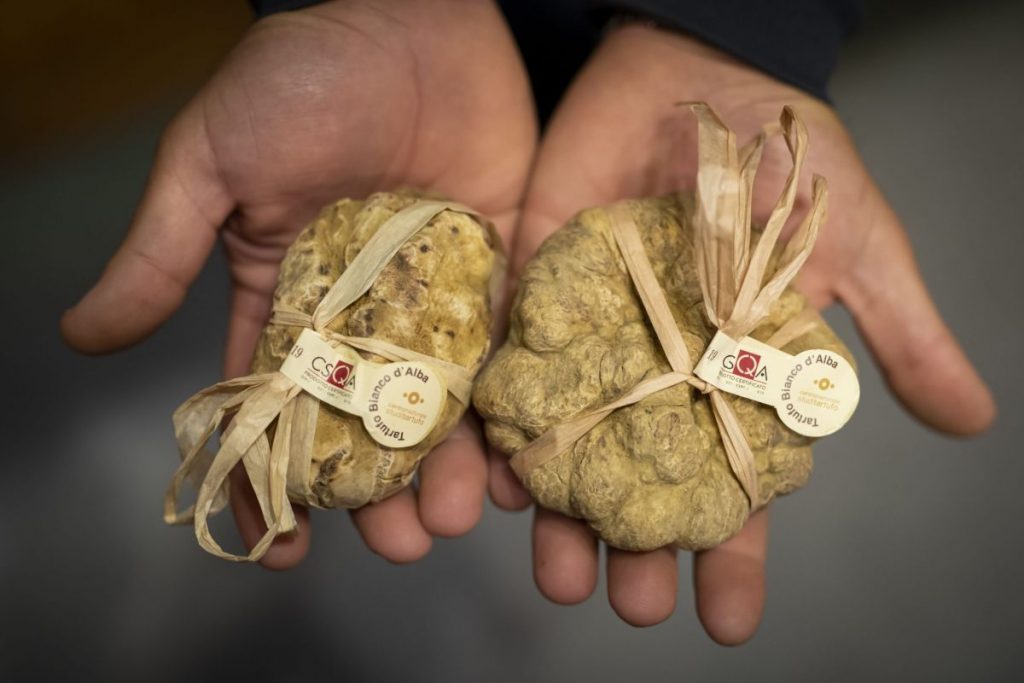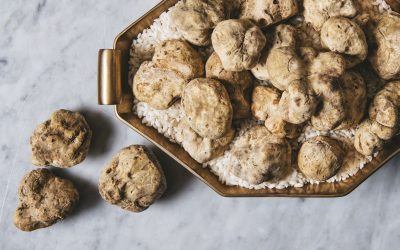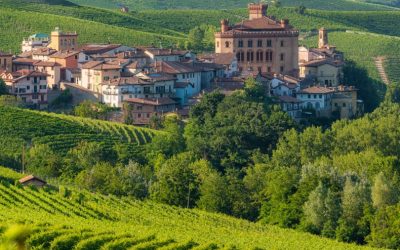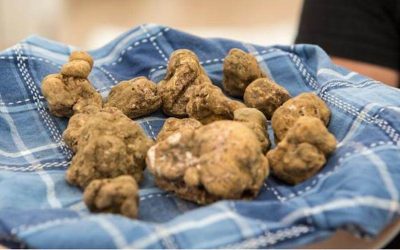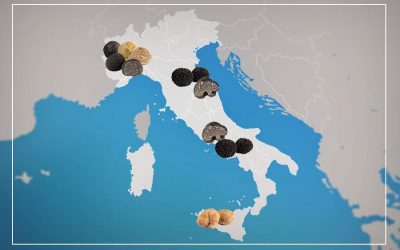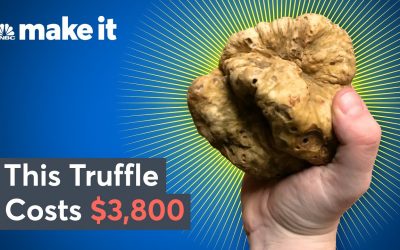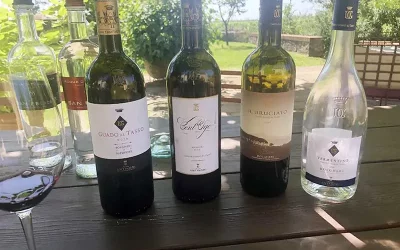White Truffle of Alba: A Scientific Exploration
This comprehensive study delves into the intriguing world of the White Truffle of Alba, its morphology, biology, symbiotic relationships, and economic impact. The findings further explore the challenges and advancements in its cultivation, its role in the culinary world, and the impact of climate change on its growth and distribution.
Truffles have always been a symbol of gastronomic luxury, and among them, the White Truffle of Alba stands out as one of the most coveted. Beyond its culinary allure, it represents a complex system of biology and ecology, deserving scientific examination.,
White Truffle of Alba: A Scientific Exploration
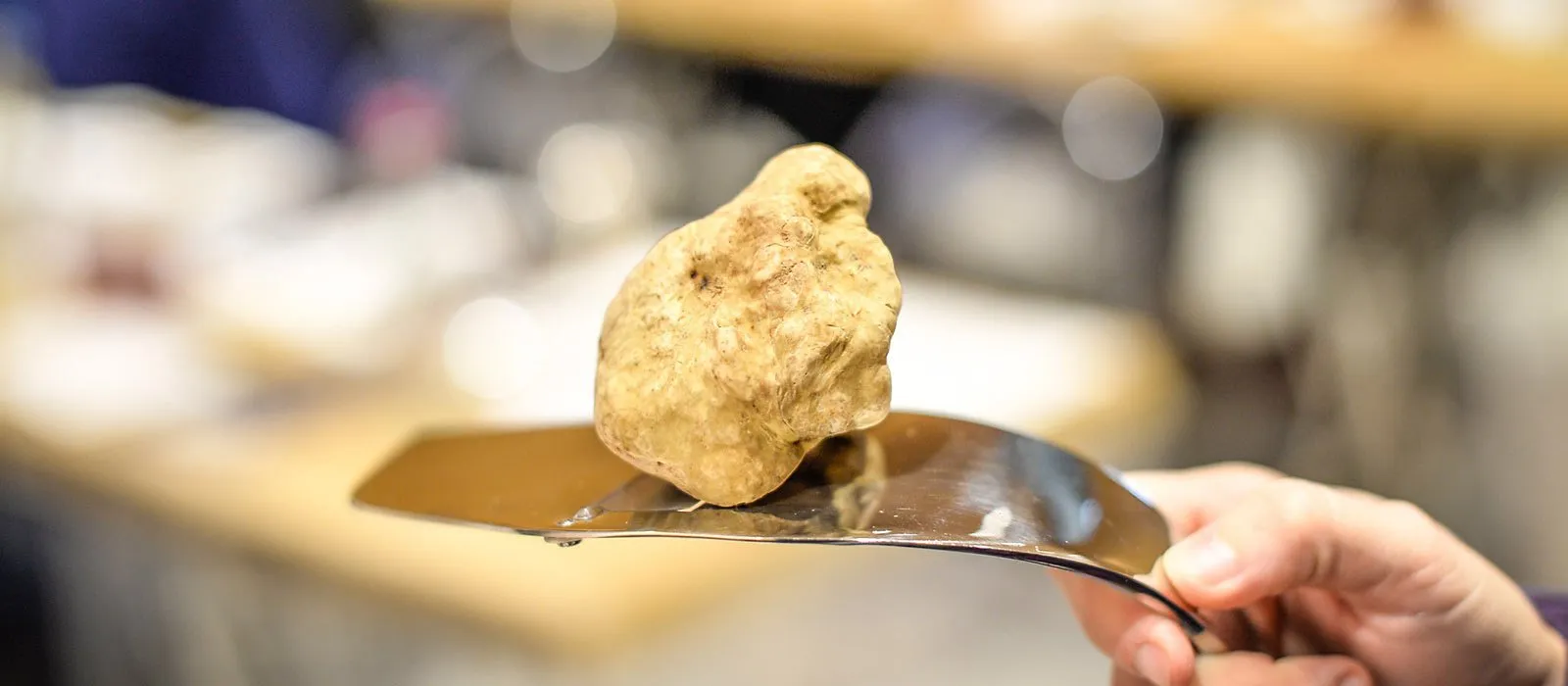
The White Truffle of Alba, often hailed as the crown jewel of Italian truffles, is renowned not just for its unique flavor but also for its scarcity. This truffle, scientifically termed as Tuber magnatum, finds its home predominantly in the countryside around the cities of Alba and Asti in Northern Italy. Its hunting season is notably shorter compared to other truffles, predominantly limited to the autumn months. This limited availability, combined with the precise conditions required for its growth, significantly contributes to its premium price and coveted status among culinary enthusiasts.
Distinct in its aroma and taste, the White Truffle of Alba offers a gastronomic experience that is hard to parallel. Describing its flavor is no simple task; it exudes garlicky nuances, reminiscent of shallots, yet it stands apart in its depth and complexity. This truffle’s singular taste and the unparalleled gastronomic experience it offers have led it to be affectionately termed the “Truffle of the Madonna.” Given its unique characteristics and the sensory delight it brings to dishes, it’s no wonder that the White Truffle of Alba is often referred to as the “diamond of the kitchen.”
Morphology and Biology
The White Truffle of Alba has an irregular, globular shape with a warty and rough external surface. Internally, it exhibits thin, white, branched veins creating a marbled appearance. Microscopically, the spores are elliptical with a reticulated surface. The growth and development of the White Truffle of Alba involve a complex lifecycle that begins with spore germination, leading to mycelium formation and a mycorrhizal relationship with specific trees. Factors such as soil, climate, and host trees influence its growth, and it typically matures from September to December.
Habitat and Distribution in Alba, Langhe, Piedmont
The White Truffle of Alba or Tuber magnatum Pico, thrives in very specific soil and climatic conditions. Characteristically found in calcareous and well-drained soils, this truffle prefers terrains interspersed with layers of clay, marl, and sand. The soil pH plays a pivotal role, with slightly alkaline conditions being most favorable. Alongside these soil prerequisites, the White Truffle of Alba grows symbiotically with certain trees, particularly oak, poplar, willow, and hazel, relying on these tree roots for vital nutrients.
Distribution of the White Truffle of Alba
While the truffle species Tuber magnatum can be found in various parts of Europe, the most esteemed of its kind, the White Truffle of Alba, has a concentrated distribution around the cities of Alba and Asti in the Piedmont region of Northern Italy. The unique combination of soil composition, altitude, and climate in this region makes it the optimal ground for the growth of these truffles, ensuring their unmatched quality. While attempts have been made to cultivate this truffle species in other parts of the world, the naturally occurring truffles of the Alba region remain unparalleled in their flavor and aroma.
Alba White Truffle’s Symbiotic Relationships
The White Truffle of Alba, like many other truffle species, engages in a mycorrhizal symbiotic relationship with the roots of specific trees. In this relationship, both the truffle and the host tree benefit. The truffle attaches itself to the tree roots, where it receives sugars and other organic compounds produced by the tree during photosynthesis. These sugars are vital for the truffle’s growth and energy needs.
Conversely, the truffle contributes to the tree by expanding the root’s absorption capacity. The truffle’s mycelial network acts as an extension of the tree’s root system, allowing it to access water and nutrients from further away in the soil. Moreover, truffles are known to help in the mobilization of certain minerals, making them more accessible to the tree.
This mutual relationship is crucial for the survival and prosperity of both entities. The specificity of this relationship is one of the reasons that cultivating White Truffles of Alba outside their native habitat is challenging. The absence of the specific tree species or the right soil conditions can disrupt this symbiotic balance, affecting the growth and quality of the truffles.
Cultivation Techniques
The cultivation of the esteemed White Truffle of Alba, scientifically known as Tuber magnatum pico, remains a challenging endeavor, given its highly specific growth requirements and symbiotic associations. However, advancements in understanding the truffle’s biology have led to the development of techniques that aim to foster its growth in controlled environments.
- Mycorrhizal Inoculation: Central to truffle cultivation is the inoculation of host tree roots with truffle spores. Young trees, such as oaks or hazelnuts, are selected, and their roots are inoculated with truffle mycelium. These inoculated saplings are then planted in truffle farms or ‘truffières.’
- Soil Preparation: White truffles thrive in calcareous soils with good drainage. Regular soil tests are conducted to maintain the right pH level, usually between 7.5 to 8.3. Organic matter, like compost, may be added to enhance soil fertility, but chemical fertilizers are generally avoided to preserve the truffle’s natural aroma and flavor.
- Irrigation and Water Management: While truffles require moisture, they are susceptible to excessive water, which can lead to rot. Drip irrigation systems are often employed, allowing for controlled water distribution, ensuring the soil remains moist but not waterlogged.
- Pest and Disease Control: Truffle orchards can be susceptible to pests and diseases. Natural predators, such as nematodes, can be introduced to control harmful pests. Fungal diseases are a concern, and regular monitoring helps in early detection and management.
- Regular Monitoring: Given the subterranean nature of truffles, monitoring their growth is a bit of a challenge. Experienced truffle farmers may use trained dogs to detect the characteristic aroma of mature truffles. Some farmers also use probes to gently inspect the soil around the host trees.
- Harvesting: Once mature, truffles are carefully harvested by hand to avoid damaging them. Trained dogs, with their keen sense of smell, often assist in locating mature truffles without disturbing the soil excessively.
While these techniques can provide an environment conducive to truffle growth, the cultivation of White Truffles of Alba remains an art as much as it is a science. The unpredictability of the yield, coupled with the truffle’s fickle nature, makes its cultivation a pursuit of passion and patience.
Chemical Composition of White Truffle of Alba
The allure of the White Truffle of Alba isn’t just its rarity or the mystique surrounding its wild growth. It is, in a large part, due to its unique chemical composition that imparts an unmistakable aroma and flavor. Scientifically speaking, the truffle’s aroma is a sophisticated blend of volatile compounds.
- Sulfur Compounds: One of the primary aromatic components of the white truffle is dimethyl sulfide, which gives the truffle its distinct earthy and garlicky notes.
- 8-Carbon Compounds: These are responsible for the mushroom-like scent of truffles. Especially, 1-octen-3-ol is significant in this category.
- Esters and Alcohols: These give the truffle its rich, complex aroma, adding layers of depth to its fragrance.
- Fatty Acids: The presence of fatty acids, especially oleic and linoleic acid, contributes to the truffle’s gastronomic value.
- Minerals and Vitamins: White truffles are also a source of essential minerals like potassium, magnesium, and calcium, along with vitamins like vitamin D.
Culinary Uses of White Truffle of Alba
The White Truffle of Alba is a culinary gem, often referred to as the “diamond of the kitchen”. Its intense aroma and flavor can transform dishes into gourmet delights.
- Shavings or Slices: The most classic way to enjoy the white truffle is to shave or slice it thinly over warm dishes, allowing the heat to release its potent aroma. Common dishes include risottos, pastas, and eggs.
- Truffle Oil: While genuine white truffle oil, infused with actual truffle pieces, can be a way to impart truffle flavor, many commercial truffle oils use synthetic compounds. It’s vital to choose high-quality oils for an authentic experience.
- Truffle Butter: Combining the richness of butter with the aroma of truffles, this is a delightful spread on warm bread or melted over steak.
- Truffle Salt: A sprinkle of truffle-infused salt can elevate the simplest of dishes, from popcorn to roasted vegetables.
- Preserves: Truffles can also be found in preserves or creams, mixed with other ingredients, to be spread on toast or used as a base for various dishes.
The key to enjoying the White Truffle of Alba in culinary preparations is subtlety. Due to its strong aroma and flavor, a little goes a long way. Moreover, it’s best enjoyed fresh to experience its full spectrum of flavors.
Economic Impact of the White Truffle of Alba
The White Truffle of Alba, esteemed in gastronomy, has profound economic ramifications for Piedmont and Italy. This treasured delicacy, characterized by its rarity, distinguished taste, and brief harvest period, is a pinnacle of luxury. It not only generates a robust revenue stream but also stimulates a wide array of sectors.
Regional Boost: During the truffle season, Alba and neighboring areas witness a remarkable increase in tourism. Truffle enthusiasts visit the region to experience truffle fairs, engage in truffle hunting adventures, and savor the unique taste at local establishments. Such tourist activities rejuvenate the local economy, propelling the growth of various businesses ranging from hotels to local restaurants and craftsmen.
Employment Dynamics: The truffle domain creates ample employment avenues for the local populace. The demand stretches beyond mere truffle hunters. There is a notable need for adept dogs skilled in truffle detection, tour guides specializing in truffle expeditions, and connoisseurs who can discern the quality of truffles in auctions. The field also engages scientists and researchers, focusing on sustainable truffle cultivation methods.
Trade and Exports: The White Truffle of Alba stands as a significant export icon for Italy. Top-tier restaurants and luxury food outlets across the globe vie to procure these truffles, even if it means paying a premium. Such global demand substantially boosts Italy’s trade metrics.
Pricing Dynamics: The cost of the White Truffle is susceptible to fluctuations, predominantly driven by environmental factors that influence seasonal yields. For instance, an unfavorable truffle season could lead to exorbitant prices, given the demand-supply mismatch. In contrast, a prolific season, while reducing individual truffle prices, could amplify overall sales volume.
Associated Industries: The allure of the White Truffle of Alba has spurred the growth of related sectors. Products infused with truffle essence, like oils or preserves, are in high demand in international gourmet markets. The truffle’s appeal doesn’t end at edibles. The experiential side of truffles, encompassing activities like culinary masterclasses or tasting expeditions, further enriches the industry’s economic contribution.
To encapsulate, the White Truffle of Alba, a culinary jewel, plays an instrumental role in influencing the economic tapestry of its native region, leaving an indelible mark on a global scale.
The Interplay of Conservation and Climate Change with the White Truffle of Alba
The White Truffle of Alba, a culinary gem from Piedmont, is not just a delight for gourmets but also an ecological indicator. Its very existence and growth patterns are intricately tied to environmental conditions, making it susceptible to the vagaries of climate change. At the same time, the increasing awareness of its vulnerability has ignited conservation efforts aimed at ensuring its continued presence in the region.
Climate Vulnerability: The White Truffle’s growth is a delicate balance of soil moisture, temperature, and symbiotic relationships with specific tree roots. Alterations in rainfall patterns, temperature anomalies, and extreme weather events – all symptomatic of climate change – can adversely affect truffle yields. There’s evidence to suggest that erratic weather patterns might shift truffle-growing regions or alter the timing and abundance of truffle harvests.
Conservation Endeavors: Given the truffle’s economic and cultural importance, there’s been a concerted effort towards its conservation. These include habitat protection measures to prevent deforestation and land conversion, ensuring the truffle’s natural habitat remains intact. Scientific research is also at the forefront, with studies focusing on sustainable truffle farming techniques and understanding the intricate mycorrhizal relationships truffles have with host trees.
Economic Implications of Conservation: The potential decrease in truffle yields due to climate change poses an economic threat, given the truffle’s significant contribution to the regional economy. Thus, conservation isn’t just an ecological imperative but an economic one. Ensuring consistent truffle yields safeguards the livelihoods of many in the region, from truffle hunters to restaurateurs.
Community Engagement: Recognizing the communal significance of the truffle, there’s been a push towards community-driven conservation efforts. Local stakeholders are involved in conservation education, understanding the importance of the truffle not just as an economic asset but as a symbol of regional pride and heritage.
In conclusion, the White Truffle of Alba stands at the intersection of ecology, economy, and culture. The challenges posed by climate change underscore the need for concerted conservation efforts, ensuring that this treasured fungus continues to thrive for generations to come.
FAQs
Why are White Truffles of Alba so expensive?
The White Truffle of Alba, often referred to as the Piedmont or Alba Truffle, is known for its limited availability due to a shorter hunting season primarily in the autumn. While black truffles can be hunted from mid-May until mid-March, the white truffle season is considerably shorter. This scarcity, coupled with their renowned flavor and unique growth conditions in the countryside around the cities of Alba and Asti in Northern Italy, contributes to their high cost.
What distinguishes the White Truffle of Alba in flavor and origin?
The White Truffle of Alba, scientifically known as Tuber magnatum, is a subterranean tuber that grows predominantly around Alba and Asti in Northern Italy. It is famously known as the “trifola d’Alba Madonna” or “Truffle of the Madonna.” As for its taste, capturing the exact essence of a white truffle’s flavor is challenging. It’s often described as having garlicky nuances, or reminiscent of shallots, offering a unique gastronomic experience that stands out in the culinary world. As for its price, as of the last recorded data, an ounce of fresh White Truffle of Alba costs around $4,327.20, underscoring its esteemed position in gourmet cuisine.
Conclusion
Reflecting on the gathered data and observations, this section consolidates the key findings of the study, highlighting the significance of the White Truffle and the need for continued research and conservation efforts.
Acknowledgements
The research team extends its gratitude to the local truffle hunters, agronomists, and all those who contributed to this exploration, not forgetting the institutions that provided unwavering support.
References
A comprehensive list of sources and literature that laid the foundation for this research is presented here, encouraging further reading and exploration on the subject.
